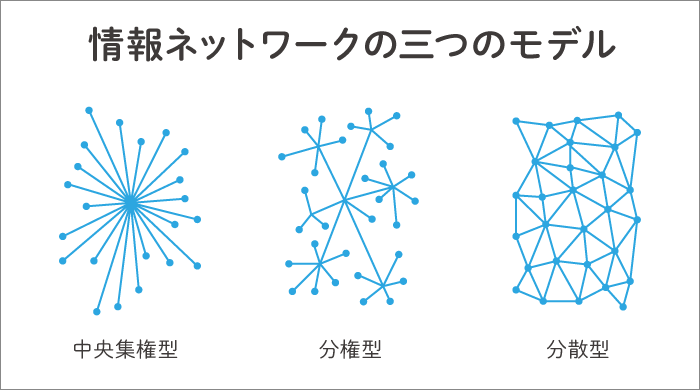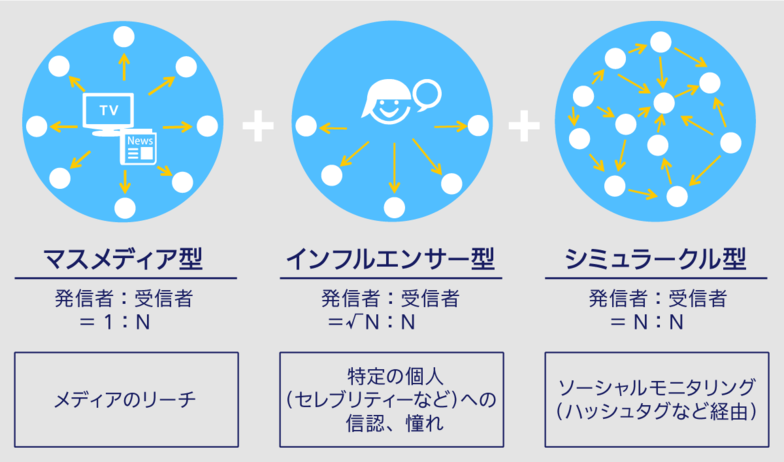This series presents a digest of the book SNS Transition History: The Future of a Society Connected by "Likes" (East Shinsho), published to commemorate its release.
Part 1: Characteristics of the Three Major SNSs and Reasons for Their Popularity
Part 2: Entering the era of searching for information on SNS: The shift from "Googling" to "tagging"
Part 3: "Like" as Innovation and the Principle of Imitation
Last time, we examined "likes" and "imitation" as the most important concepts in SNS, and cited "simulacra" as a keyword for information behavior.
This time, we will consider attempts to model the spread of information brought about by SNS, based on the concept of "simulacra".
Why Simulacra Occur: The Shift in Value from Things to Experiences
The author defines simulacrum as a visual image (a photo, video, or other symbol) on SNS that everyone starts imitating, even though no one knows who started it.
Sociologist Roger Caillois lists "imitation" as one of the four elements of play. The enjoyment and pleasure of imitation, such as playing house or doing impressions, can be considered an instinctive tendency.
The author's concept of "simulacrum-type information diffusion" focuses precisely on the principle of imitation and its compatibility with the way information spreads on social media.
When we share our photos on Instagram or Facebook, or share dance or themed videos on TikTok, we tend to consciously or unconsciously post photos and videos similar to those posted by others.
Considering Instagram, where simulacra are likely to occur, especially in its early days, the editing methods were simpler and the patterns were more limited than they are now, and many people cited the fact that "anyone can easily make their photos look stylish" as a feature. Because of this characteristic, communication on the platform became constrained. Everyone wanted to share stylish photos, and it was inevitable that "Instagrammability" would become popular.
However, these constraints were not necessarily explicitly stated anywhere; they were simply unspoken rules that naturally developed as users communicated with each other. In this way, users internalized the codes of communication and began to transmit them, and users who joined later were also influenced by them. As a result, visuals became increasingly simulacral.
As communication spaces gradually consolidated, the network effect caused the simulacrum to become increasingly reinforced in a cyclical manner.
The author sees the emergence of the simulacrum phenomenon as inevitable from the perspective of consumers, from the historical perspective of the development of cities and information technology, and furthermore, from the development of consumer society.
The concept of "trends" emerged in the last 100 to 200 years. With the birth of media and urban culture, people began to find value in "trendy things." Furthermore, with the spread of the Internet and social media accelerating the flow of information, imitation became faster and more simultaneous.
To broaden the discussion, if we consider the larger scope of the development of consumer society, simulacra can be reinterpreted as a cultural phenomenon occurring over a longer span than the digitization represented by the spread of smartphones. How have the values surrounding our consumption activities changed?
From the latter half of the 20th century onward, as mass consumption society matured, "symbolic value" began to take on importance. Symbolic value is a term used to indicate what meaning things and events have for others, contrasting with "functional value," which is measured by the specifications of the thing itself.
As economies grew and societies became more affluent, goods reached saturation. The presence or absence of symbolic value, rather than functional value, became the switch determining users' consumption behavior. The rise of the so-called luxury industry is grounded in these modern consumption needs. Yes, to put it in everyday terms, symbolic value can be rephrased as "brand power."
For example, when comparing a bag that costs 10,000 yen to one like a Hermès Birkin that costs 1,000,000 yen, both seem to offer nearly identical functional value in terms of "carrying things." At the very least, it's hard to imagine one being 100 times more useful for carrying things.
So, what are we agreeing to pay for in this case? It can be considered that the latter possesses that level of symbolic value, and the customer pays the ¥1 million expecting that value. The buyer recognizes the symbolic value there, holds the expectation that possessing it will earn praise from others—that they will receive a "Nice!"—and receives the brand power embedded in that bag as utility.
While symbolic value has often been discussed at the level of objects, the author focuses on its expansion to the level of experiences. From objects to experiences. The symbolic value of experiences—the value of having an experience that makes others envy you and think highly of you—has surged dramatically with the advent of the visual communication era.
And the thing that most easily and routinely delivers this symbolic value of experiences is the "Like!" It has become the trigger for modern consumption.
The history of "shiny" experiences is shared on SNS, spreading as simulacra and arousing a desire among users to share experiential consumption. This is a phenomenon with deep implications, closely related not only to changes in the information media environment but also to the stage of an increasingly sophisticated consumer society, "from things to experiences." The trend of people searching for simulacral experiences and cross-referencing them with each other—tagging—is considered irreversible.
Forms of Information Diffusion in the Modern Age: Mass Media, Influencers/Communities, Simulacra
Let's look back at the discussion so far and organize the forms of modern information diffusion schematically.
As a general information network model, it is often classified into the following three types: "centralized," "decentralized," and "distributed." This model was devised by American computer scientist Paul Baran in the 1960s, when the structure of the Internet was first conceived.

Illustration: Haruka Watanabe (Dentsu Inc.)
In the centralized model, information spreads from the center to the periphery. In the decentralized model, small hubs are scattered throughout, organizing small groups and maintaining the overall structure. Finally, in the distributed model, there is no center, the nodes are flat, and order is created by their interconnection.
Based on these models and several research projects, the author proposes classifying the structure of modern information diffusion into three types: "mass media," "influencer," and "simulacrum."
●Mass Media Type
If we replace mass media such as television and newspapers with the relationship between sending and receiving information, we can say that a "1:N" relationship is formed with us, the consumers. We, the recipients, are positioned as countless Ns in contrast to a single powerful original source of information. Let's call this the "mass media type."
●Influencer Type
The next type, the "Influencer Type," refers to a form of communication carried out by highly information-sensitive influencers who exist within various communities. In my opinion, the volume of senders and receivers is "√N:N." If a platform has 100 million users, we can theoretically estimate that approximately 10,000 of them are influencers on that platform.
●Simulacrum Type
The "simulacrum type" refers to a situation where it is unclear whether there is a clear sender, or an original source or origin of the information, but information is copied in a network-like manner and trends spread. Transmission and reception can be expressed as "N:N".
These three types do not transition in a linear fashion. We still experience mass-type desire/needs arousal, where we see a TV commercial, learn about a new product, and consider purchasing it. We are also increasingly inclined to buy products introduced by influencers. Furthermore, as exemplified by the simulacrum type, it has become commonplace for people to post photos of pancakes, and then go out to eat them because doing so is fashionable, leading to attitude changes and behavioral arousal.
In other words, in modern times, the three types of information dissemination—mass media, influencer, and simulacrum—occur in parallel and are interrelated, diversifying and increasing the frequency of the ignition points of desire and need. This perspective is also extremely important in marketing and social research, which require an understanding of modern consumers.






